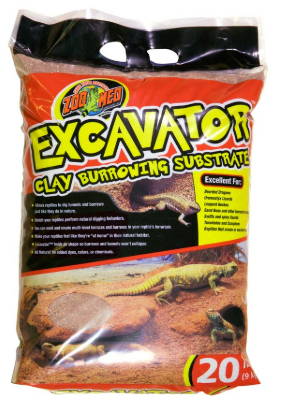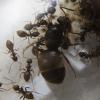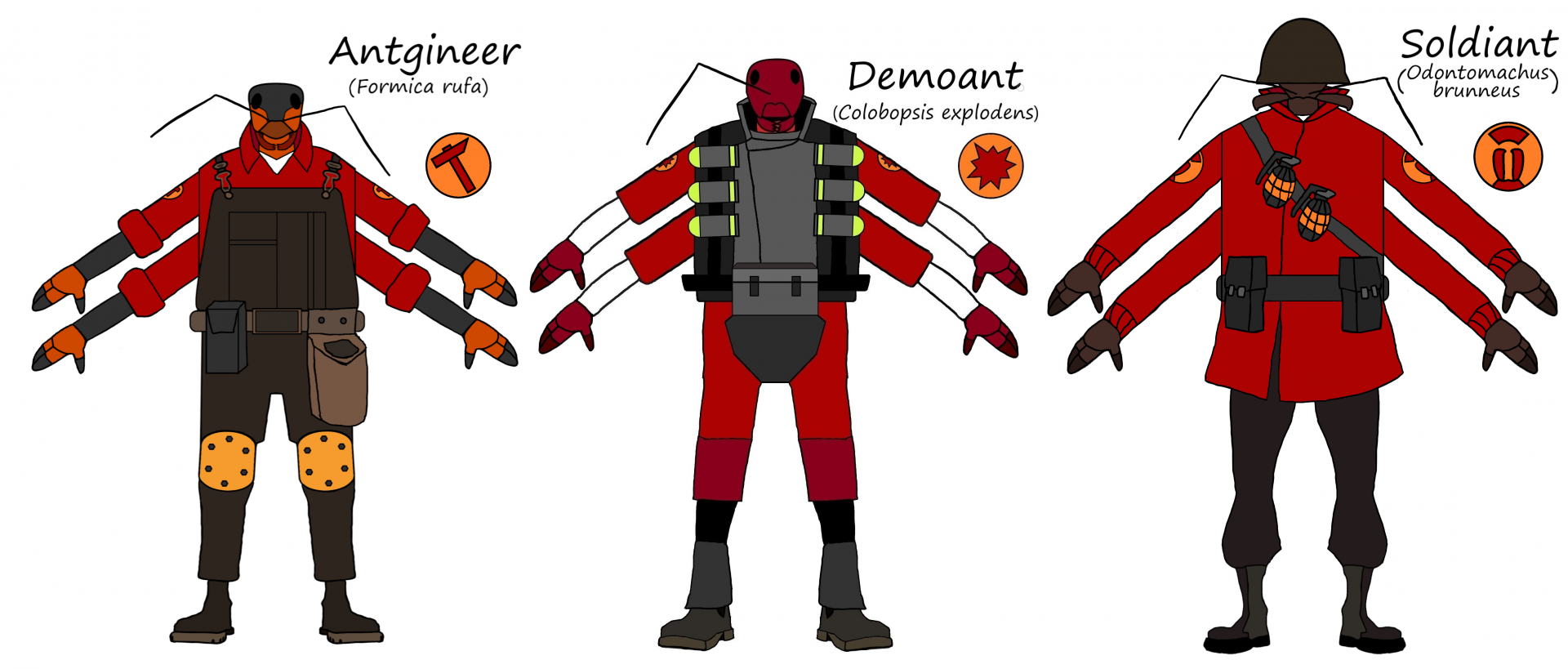22nd September 2024
It is raining. No anting for me ;(
Pseudoneoponera rufipes
2Q
After catching another queen in late August as well as the older other queens not doing much, I decided to make a risky move and merge them all together (if you can't tell this is a way i use to reduce colonies). After a few days together one queen collapsed but not due to dominance related injuries. A hierarchy emerged between the remaining two queens.

Here you have the two. The one closer to the camera is the dominant one, and the submissive one gets constantly bullied by the dominant queen. Usually in the form of antennae bashing and pulling. Yet, this is the most successful they have been as I have not seen that many eggs at once in this year of keeping them.
Iridomyrmex anceps
1Q, ~300W
They are getting out of control. They move extremely fast and react quickly to any disturbance. It does not help that they are the second fastest growing species in my collection (beaten by Pheidole, but the big heads move way more chill compared to the black tyrants).

They also like to make pyramids using brood items in the arena. It could be that the drier environment in the arena favours the pupae more.

Myopopone castanea
1Q
Finally the eggs hatched, but that old larva from before is still the same... I also moved her to a nest with forest substrate instead of clay. It will likely take another month for workers to arrive, if I am lucky that is.

Anochetus graeffei
3Q, ~30W
Now moved them to a plaster nest. So far so good with them, good number of cocoons and the workers bringing the larvae outside for food.


But just one problem. Mites. I saw a few workers having some attached on their bodies. See the bumps on this worker's gaster?

No idea if these are parasitic and harmful to the ants or just hitchhikers that does nothing. I will keep an eye on any worker deaths.
Paratopula bauhinia
~20W
This is my old colony which I got back from Leo. From an incident a massive number of workers died and presumably the queen too. However, there are some eggs lying around and there is one wingless dealate in the mass of alates that could be the queen.

There is really only about 20 to 30 workers, the rest are alates.

Carebara affinis
1Q, ~100W
Good to see the first major arriving, visible above the queen's head. The colony is growing well but a bit slow. That is probably a blessing in disguise, watching 50 workers rush to the tube entrance during feeding time is terrifying and it will only get worse.

There has been some deaths. Mayriella is on the brink of collapse with workers dropping like flies. Centromyrmex queen gave up and died after I moved her to a new setup which is a big bummer.
University is hammering on me, but I did get to try some lab work on sorting insects which is very neat. See you all next time.
















































































